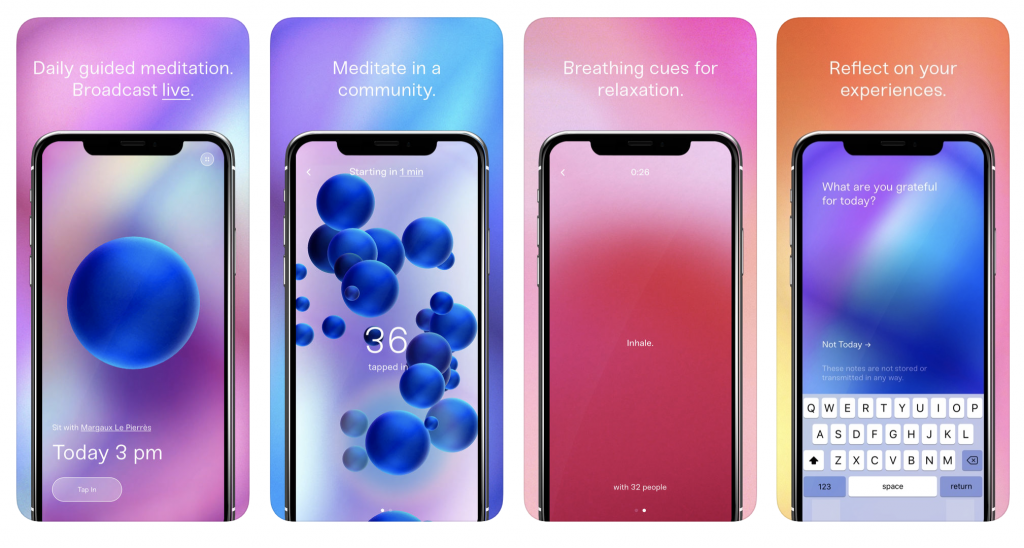It’s an unfortunate truth: for many creatives, deadlines can feel like studying for finals in college. Frantic. Frenzied. A panic amplified by sleep deprivation and caffeine injections. The deadline freakout usually starts with late/early stage stagnation. Why do we get so jazzed at the start of a project, but freeze up when the real work begins? Blame it on perfectionism or over scheduling—with a dash of desire to be doing anything else but work at that given moment. (It’s so nice outside, okay?)
Point blank: Deadlines are hard. But they’re not going away, so you may as well get used to them. We enlisted five professionals who are pretty much on deadline all the time, to share their tried and true tips. For those of us who constantly feel deadlines lurking (like my dog when I’m eating cold cuts in the glow of the refrigerator at 2 a.m.) this one’s for you.

1. Prioritize things by importance and the time it takes to complete.
– Alex Taylor, Assistant Branded Content Editor at Well+Good
“I used to be quite the procrastinator, but I’ve learned that lends itself to poor quality work, so I want to hit every deadline to make the highest quality work possible,” Alex said.
Perhaps the first step in managing a multitude of deadlines is establishing priorities. Is it due today or next week? Is this internal work or for a client? Is this a project you can knock out in an afternoon or are you going to have to space it out over several weeks?
Once you answer the basics and put your to-dos into some sort of hierarchy (i.e. by urgency, time allotted), it makes your assignments seem less daunting, and you can move onto the next step: writing it all down.
2. Write down every single thing you’re doing or going to do.
– Chloe Castleberry, Copywriter at imre Marketing Agency and Freelance Reporter at Medium
Once you’ve prioritized, write it down. “Whether it’s a checklist or ongoing to do list, I have to write it down or else I will most likely forget to do it four hours from now,” Chloe said. Maybe it’s just a simple, numbered list; or maybe you have an elaborate workflow that looks like the Rosetta Stone to everyone else. No matter where you fall on the Type A-B scale, just write it down and check it off.
Not only are you keeping a visual record of what you have to do, but when you get to cross a task off that list, your brain literally releases dopamine—the feel-good neurotransmitter that plays a big role in both our happiness and motivation. That’s your reward.
Pick a Digital Organizing Tool
- If you’re a collaborator, try Wunderlist.
- If you’re a color-coder, try Todoist.
- If you’re a gamer, try Habitica.
- If you live and die by your inbox, try Swipes.
- If you’re a minimalist, try Any.do.
3. Set time on your calendar to work on different projects…. Keep the calendar moving, and you’ll move with it.
– Lyanne Alfaro, Multimedia Producer and Host
Like friendship and caviar, when it comes to work quality trumps quantity. Lyanne’s strategy is correlated to the notion of working smarter, not harder. “You don’t necessarily have to work for long on these projects, but you do have to work smart so your energy or creative ideas doesn’t run thin on one project,” Lyanne advised.
Research shows that longer work-weeks make us all less productive. A Stanford study shows that “employee output falls sharply after a 50-hour work-week, and falls off a cliff after 55 hours—so much so that someone who puts in 70 hours produces nothing more with those extra 15 hours.”
As Lyanne alluded to, focus on one project at a time and try not to multitask. “People can’t multitask very well, and when people say they can, they’re deluding themselves,” said neuroscientist Earl Miller in an interview with NPR. Since you’re likely always juggling more than one deadline, multitasking can be tempting. But, trying to transcribe an interview while dialing into a conference call will inevitably result in two partially incomplete tasks, and you’ll have to spend more time in the end course correcting.
Another tactic is to make your most basic decisions as perfunctory as possible so you can spend more energy on the bigger problems. You don’t necessarily have to go full Steve Jobs and wear the same outfit every single day, but curating a work wardrobe with basic staples or packing the same lunch consistently will create a routine that frees up brain space.
4. Be willing to jump into the project when inspiration strikes.
– Riley De Leon, Associate Producer at CNBC
Why is it that some of our best, most intriguing ideas come when we’re doing something totally unrelated? I mean, there’s a whole Reddit thread dedicated to thoughts that popped into people’s heads when they’re in the shower. Perhaps that’s why more and more offices are starting to install showers in their buildings and The Wing, a popular co-working space from New York to L.A., is equipped with them as well. If you’re feeling a block in creativity, or find the same thoughts floating in a state of rumination, give yourself the option to take a step back for a minute (or 30). Some ideas that I’ve heard work for some of my colleagues and mentors are: listen to music videos, go for a walk, cook or bake your favorite snack, or do a couple chores you’ve been putting off.
Riley advised, “If ideas aren’t flowing, don’t work yourself into the ground just because you’re on deadline.” [We recommend you get up and do something—suggestions above—at least until you can reset.] Says Riley: “When you force yourself to produce something that doesn’t come from an organic place, the work itself is going to suffer.”

5. Set aside time to recharge.
Jessica Marak, Freelance senior designer at Red Antler, art director, and photographer
Developing sustainable, healthy habits can help prevent burnout and make even the busiest of seasons a bit more manageable. But, like any habit, it takes time to form—so don’t beat yourself up when you don’t notice effects overnight. Just as it’s taken a while for you to hone the craft you’re meeting deadlines for, developing these routines will be a process. And don’t feel like you have to start a bunch at once—trying one or two at first is realistic.
Nike Master Trainer Joe Holder coined the term “strategic laziness” to refer to athletes taking scheduled rest periods, but we like to apply it to my work-life balance, too. Putting aside time into your day to chill the f out and do things that bring you joy, relaxation, or whatever you’re looking for is just as important as scheduling check-ins and deadlines.
Stretching
If you’re feeling particularly overwhelmed and tired, but don’t have time for a nap—try a restorative yoga pose. Unlike other types of yoga—namely, the sweaty, strenuous, pose-for-Instagram variety—restorative yoga involves holding just a few poses for longer lengths of time, which induces relaxation and stress relief. More stretch, less sweat. Try Viparita Karani, or legs-up-the-wall—which is exactly what it sounds like: lay on your back, scoot your butt close to the wall, and arrange your legs perpendicular to the floor. Pretty great. Practicing this regularly promotes better sleep, reduces anxiety, and increases circulation, according to Harvard Health.
Meditating
The predicament of trying to sit quietly when your mind might be racing a mile a minute probably sounds more overwhelming than helpful—so try starting small. Tap In is a free “live group meditation app” that sends you a push notification at 2:55 EST every day to let you know their session is about to begin. The meditations are just 15 minutes, and you can tap in from your desk or during a walk around the block during your lunch break. They’re accessible, built for beginners and pros alike, with a mix of meditation types (each month has a different theme) to keep things interesting. And because it’s at a set time—the exact time of the day you’re most likely in need of a breather—you can’t put it off until “later” like you can with other meditation apps.

Communication
All of our deadline pros had a similar piece of advice that kept coming up during our interviews: communicate. At the end of the day, we’re all fallible human beings. Things are going to come up, sometimes you might just need a little extra time, and it’s perfectly okay to ask for an extension or talk about other solutions with your editor, manager, or whoever is overseeing the project. Over time, setting initial expectations will become second nature, and that dreaded “sorry for the delayed response” email will be a thing of the past.



